A bent tube is lowered into the stream as shown in the figure below. The velocity of the stream relative to the tube equal to v. The closed upper end of the tube located at the light . To what height h will the water jet spurt ?
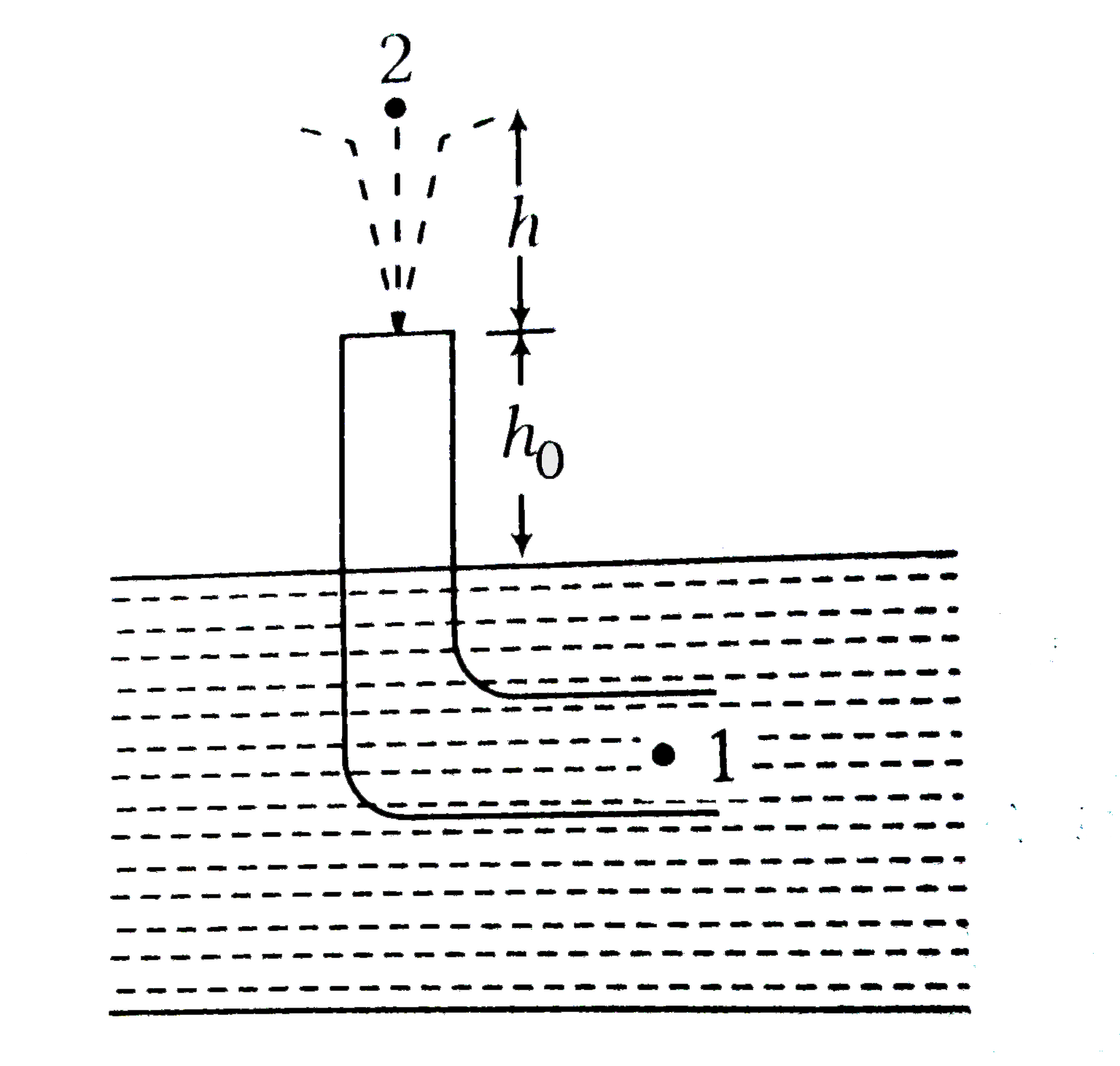
The correct Answer is:C
Let tube's entrance be a depth y below the surface. Take point 1 at entry, 2 at the maximum height of the fountain.
Applying Bernoulli's theorem,
Taking,
substituting,
Topper's Solved these Questions
- BOOK - DC PANDEYCHAPTER - FLUID MECHANICSEXERCISE - B) Medical entrance special format question19videos
FLUID MECHANICS
- BOOK - DC PANDEYCHAPTER - FLUID MECHANICSEXERCISE - Match the columns6videos
FLUID MECHANICS
- BOOK - DC PANDEYCHAPTER - FLUID MECHANICSEXERCISE - Check point 13.410videos
FLUID MECHANICS
- BOOK - DC PANDEYCHAPTER - EXPERIMENTSEXERCISE - Subjective15videos
EXPERIMENTS
- BOOK - DC PANDEYCHAPTER - GENERAL PHYSICSEXERCISE - INTEGER_TYPE2videos
GENERAL PHYSICS
Similar Questions
A bent tube is lowered into a water stream as shown in figure. The velocity of the stream relative to the tube is equal to v=2.5 m/s. The closed upper end of the tube located at the height h0=12cm has a small orifice. To what height h will the water jet spurt ?
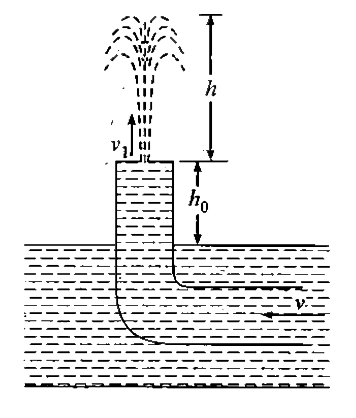 View Solution
View SolutionA bent tube is lowered into a water stream as shown in figure. The velocity of the stream relative to the tube is equal to v=2.5m/s. The closed upper end of the tube located at the height h0=12cm has a small orifice. To what height h will the water jet spurt?
 View Solution
View Solution
Knowledge Check
- Question 1 - Select One
Water rises to a height h in a capillary tube lowered vertically into water to a depth l as shown in the figure. The lower end of the tube is now closed, the tube is the taken out of the water and opend again. The length of the eater column remaining in the tube will be
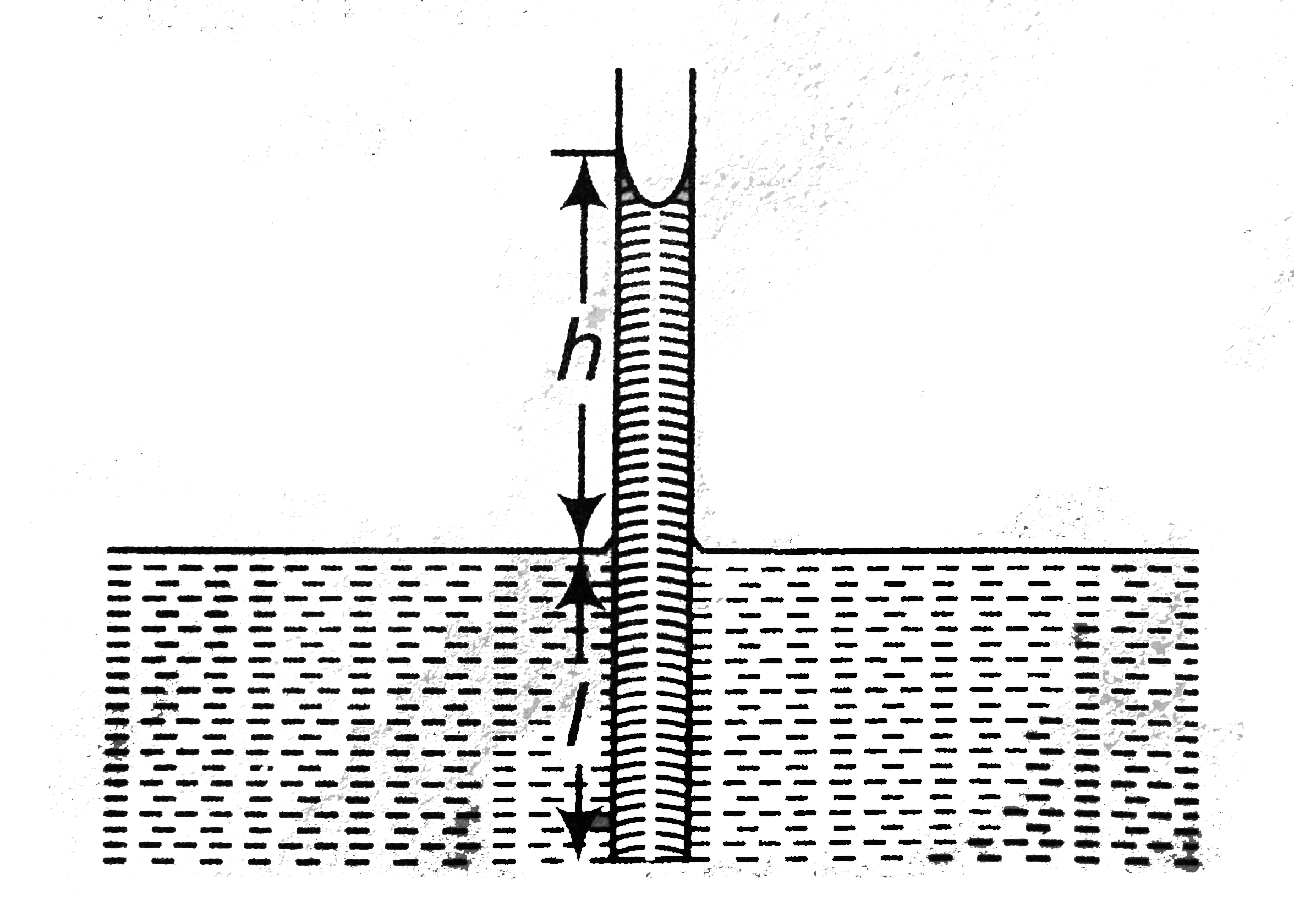 .A2hifl≥h and l+h if l≤hBhifl≥h and l+hifl≤hC4hifl≥h and l−hifl≤hDh2ifl≥h and l+hifl≤h
.A2hifl≥h and l+h if l≤hBhifl≥h and l+hifl≤hC4hifl≥h and l−hifl≤hDh2ifl≥h and l+hifl≤h
A bent tube is lowered into water stream as shown in figure. The velocity of the stream relative to the tube is equal to v=2.5m/s. The closed upper end of the tube located at a height of 12cm has a small orifice. To what height h will the water jet spurt ?
 View Solution
View SolutionA bent tube is lowered into a water stream as shown in figure. The velocity of the stream is V1. The closed upper end is located at a height h0 and has a small orifice. To what height h will the liquid get spurt? brgt
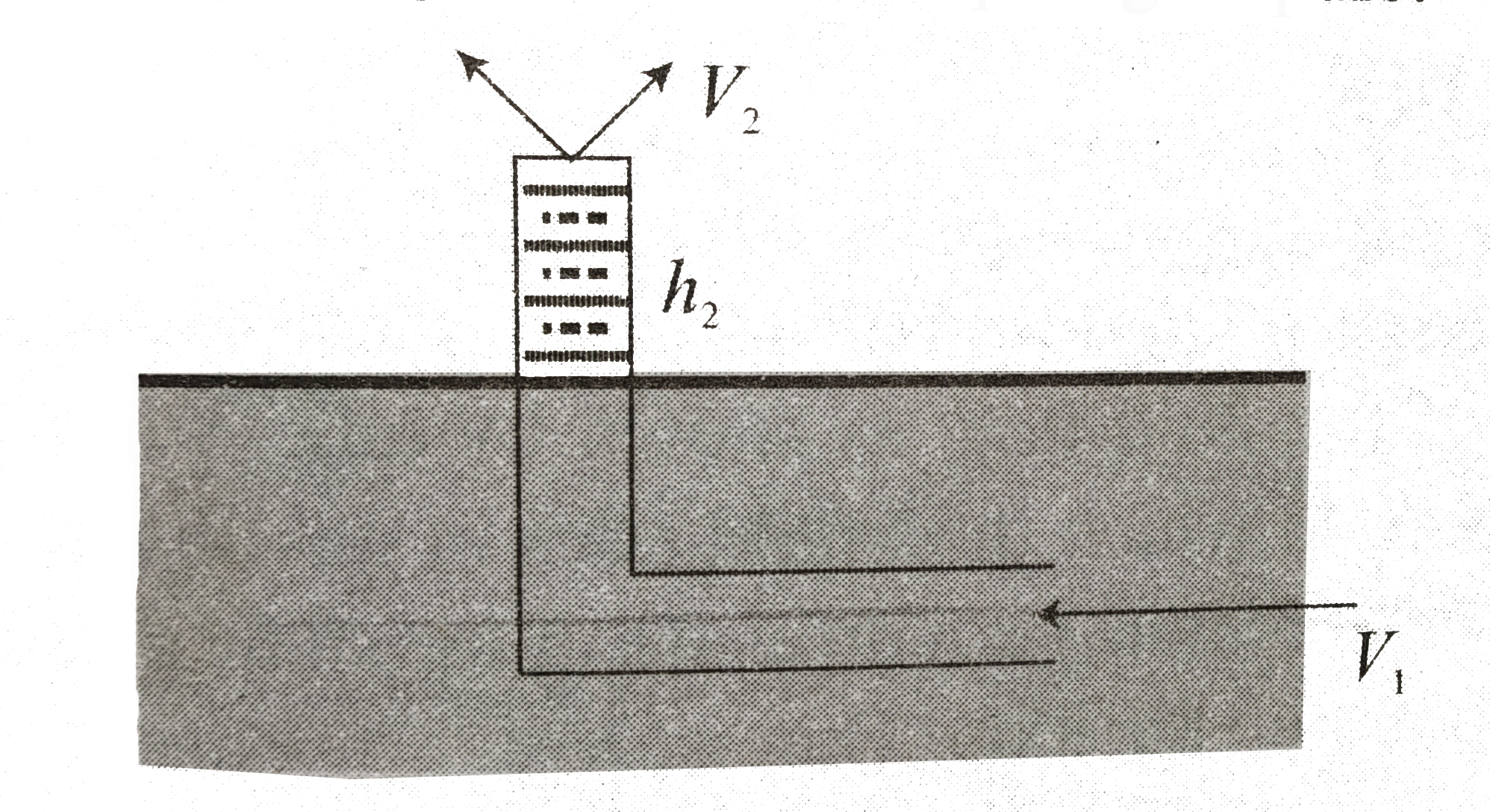 View Solution
View SolutionA bent tube is lowered into a stream of water as shown in the figure. The velocity of the stream is v=2m/s. The closed upper end of the tube is at a height h0=10cm from the suface of water in the stream and has a small orifice. To what height will the water jet from the orifice spurt?
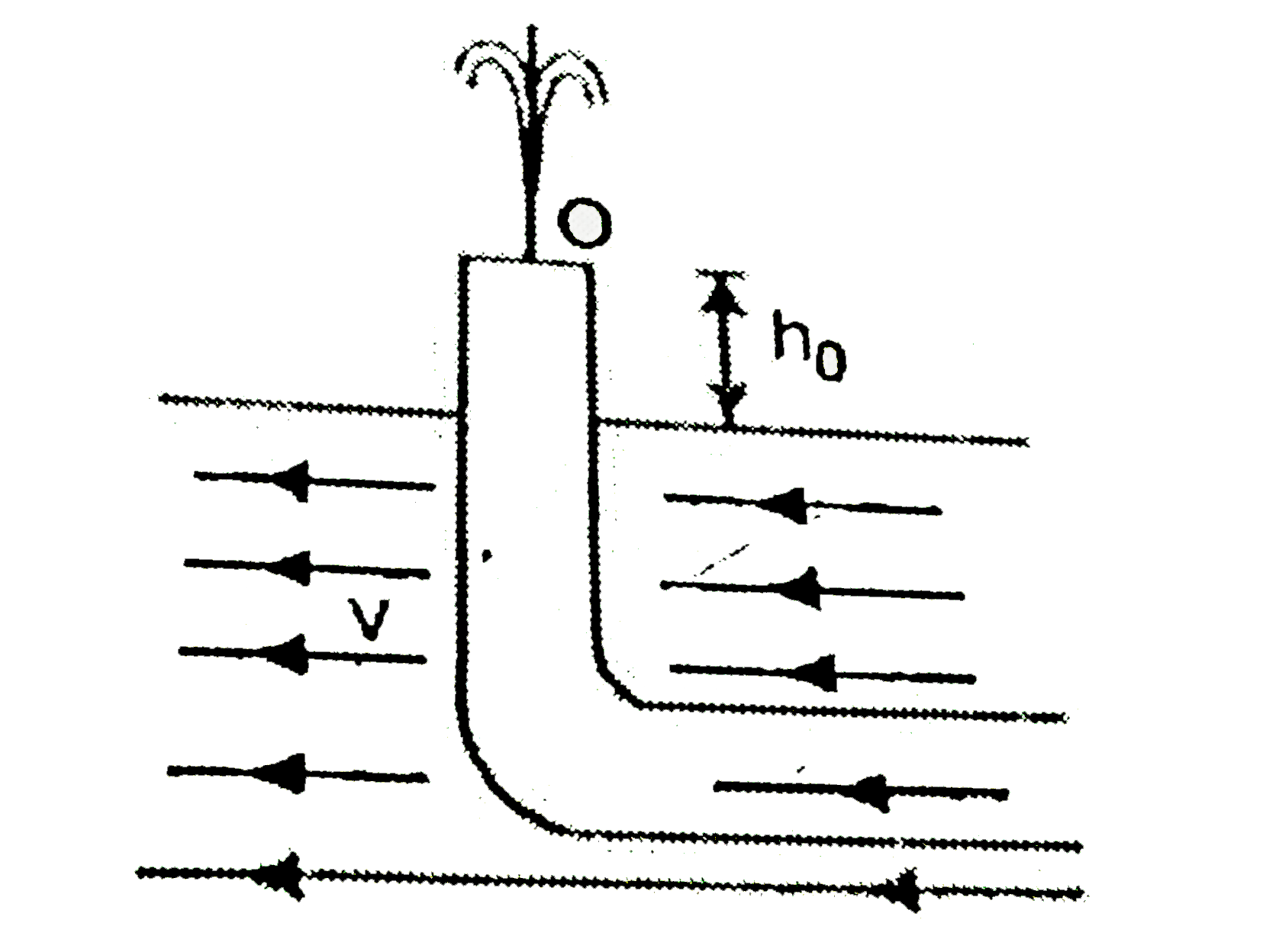 View Solution
View SolutionThe lower end of a capillary tube is immersed in mercury. The level of mercury in the tube is found to be 2 cm below the outer level. If the same tube is immersed in water, up to what height will the water rise in the capillary ?
View SolutionA capillary tube is dipped in water vertically. It is long enough for the water to rise to the maximum height h in the tube. The length of portion immersed in water is I<h. The lower end of the tube is closed and then the tube is taken out and opened again. Will all the water flow out of tube? Explain.
View SolutionA light cylinderical tube of length L=1.5m and radius v=1√πm is open at one end. The tube containing air is inverted and pushed inside water as shown in figure. A block made of material of relative density 2 haas been placed on the flat upper surface of the tube and the whole system is in equilibrium Neglect the weight of air inside the tube and find the volume of block placed on the tube.
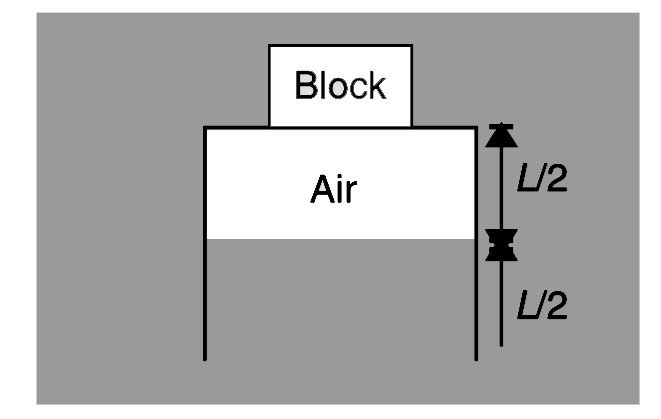 View Solution
View Solution(i) Air (density=ρ) flows through a horizontal venturi tube that discharges to the atmosphere. The area of cross section of the tube is A1 and at the constriction it is A2. The constriction is connected to a water (density=ρ0) tank through a vertical pipe of lenght H. Find the volume flow rate (Q) of the air through tube that is needed to just draw the water into the tube.
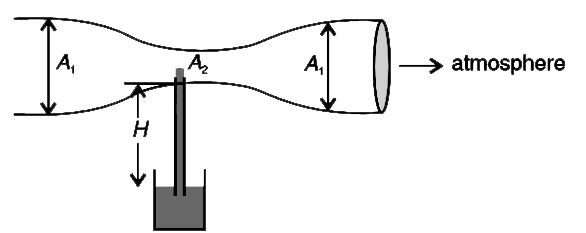
(ii) A non viscous liquid of constant density ρ flows in a stremline motion along a tube of variable cross section. The tube is kept inclined in the vertical plane as shown in the figure. The area of cross section of the tube at two points P and Q at heights of h1 and h2 are respectively A1 and A2. The velocity of the liquid at point P is v. Find the work done on a small volume ΔV of fluid by the neighbouring fluid as the small volume moves from P to Q.
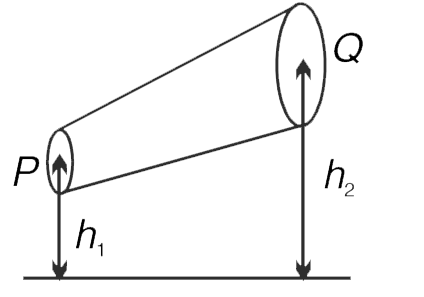 View Solution
View Solution

